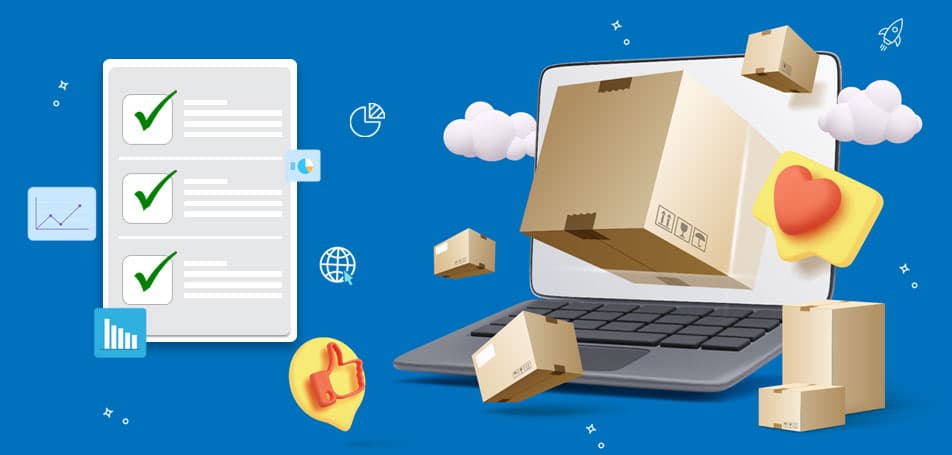
Succeeding in the eCommerce landscape isn’t just about attracting customers and shipping orders. You also need to make sure you’re managing your finances and cash flow correctly behind the scenes.
Cash flow is an important concept for any business, but it’s also something that’s frequently misunderstood. In the eCommerce world, effective cash flow management ensures you can handle a range of unpredictable issues, from sporadic sales trends to issues with supply and delivery, while still managing a steady stream of expenses.
What is eCommerce Cash Flow?
First of all, to improve your cash flow, you need to understand what it actually is. eCommerce cash flow doesn’t just refer to the money coming into your business, it also addresses outgoing cash too, often spent on things like logistics and supply chains.
Cash flow management helps you to understand what your “cash on hand” is at any given time (income minus expenses). It also gives you an insight into how successful your business is. Positive cash flow means you have more money coming into your eCommerce company than you have going out, which ensures your brand can stay afloat.
So, how can you improve your eCommerce cash flow?
Top Tips for Improving Cash Flow
Above all else, mastering eCommerce cash flow often means learning how to keep a close eye on your financial information and track the movement of your money. This requires careful strategy, the use of the right technology, and commitment. Start with these tips.
1. Practice better bookkeeping
First, you’ll need to practice impeccable bookkeeping. While you can work with an accountant to help you understand your cash flow, it’s also helpful to have apps available so you can check incoming and outgoing finances at any time.
Tools like QuickBooks and Xero are popular because they come with extra applications for things like forecasting and tracking invoices that haven’t yet been paid. You can usually also allow access to these applications to your accounting team, which can help a lot at tax times.
2. Leverage invoicing tools
One of the biggest challenges companies often face when it comes to managing cash flow is following up on unpaid invoices. If your invoices aren’t paid on time, then your cash flow is more likely to become negative.
Once again, technology can help a lot in this regard. Invoicing tools like Chargify can automate the process of sending invoices to customers when certain triggers are met (like you reach the end of a month). You can also automate payment reminders to go out every so often if you don’t receive payment straight away if you’re selling subscriptions on your eCommerce stores.
3. Automate more of your payments
Automating your invoicing strategy can be an excellent way to improve the speed at which you receive payments as a growing eCommerce brand selling subscriptions. However, it’s also worth remembering about the outgoing payments you need to deal with too.
Automating payments to suppliers, manufacturers, partners, and even software providers will help to improve your cash flow. Not only does it mean you have fewer things to remember at the end of each month, but it can also reduce your chances of having to pay late fees for various expenses. You can even automate payments to go out at just the right time.
4. Use predictive analytics to plan promotions
As technology for tracking cash flow and finances grows increasingly advanced, companies are even beginning to access various forms of AI in their analytics. These tools can assess your long-term sales patterns, and offer insights into when you might experience dips in sales at your store.
By determining when you’re most likely to have the lowest sales, you can take steps in advance to increase your chances of success. For instance, you might plan to have a sale during the month when you usually have lower levels of incoming cash. Or perhaps you can look for ways to reduce your outgoing expenses during that month.
5. Unlock new forms of financing
If you’re concerned about a lack of capital to deal with your outgoing costs at certain months of the year, it’s worth looking into your options. Having a limited amount of cash during important stages in your eCommerce company’s growth could mean you miss out on incredible opportunities.
Fortunately, there are eCommerce-focused funding solutions available. For instance, 8fig helps online sellers to scale up with flexible capital injections aligned with supply chain needs. The company puts together custom growth plans based on continuous funding, which negates the risk of expanding inventory to allow growth. With access to more funding, you’ll have the freedom to keep your company running smoothly until your cash flow is back on track.
6. Use reports wisely
Finally, remember to use the cash flow reports and analytics you collect as carefully as possible. Use balance reports for cash flow projects, and make sure you pay attention to any significant issues which might be harming your cash flow, like slow-paying customers, or expensive suppliers.
You can also gather information from your eCommerce analytics to see where your customers are spending the most money, and use those insights to work on increasing your average order value. For instance, could you bundle certain frequently-purchased products together to convince your customers to spend more with each visit?
Manage Cash Flow Correctly
Cash flow can be difficult to understand for growing eCommerce companies. However, learning how to master this concept could be one of the most valuable things you do.
With effective cash flow strategies, you can align all the money coming in and going out of your business, and ensure you have what it takes to thrive long-term.
















